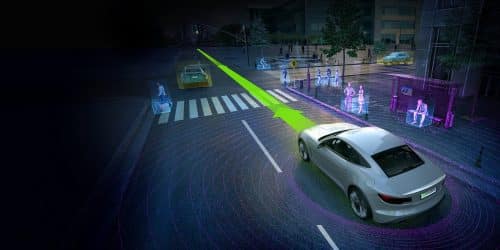Head of the Institute for Transportation Research at the Technion: chances and warnings for the era of the "autonomous vehicle"

Prof. Yoram Shiptan, head of the Transportation Research Institute at the Technion, has been dealing with issues related to technological developments in the world of transportation for many years. In this framework, he investigates the consequences of the "autonomous vehicle" and complementary policy measures such as taxation and pricing on consumer behavior.
Prof. Shiptan, a faculty member in the Faculty of Civil and Environmental Engineering, says that "first of all, the misconception regarding the term 'autonomous vehicle' must be corrected. This vehicle is not autonomous because it does not act on its own but according to the instructions it receives. Therefore, it is more correct to call it an 'automatic vehicle'. Beyond that, we must understand the positive and negative consequences of moving to transportation based on such vehicles and direct this revolution in the desired direction."
The automated vehicle revolution is no longer science fiction. The buds that appeared already in the 70s in Germany, Japan, Italy (Project Argo), the European Union and the United States (DARPA Grand Challenge) have matured in recent years into actual cars that integrate into the flow of transportation. Google introduced the technological wonder in 2014, and Tesla created a real revolution that infected the entire automotive industry. Last year, Uber offered self-driving test rides on the streets of Pittsburgh.
"There is no doubt that the autonomous vehicle will bring about a huge change in the car market and the transportation system," says Prof. Shiptan, "but the decision to use an autonomous vehicle depends on the types of services these vehicles will provide, their pricing and the policies that will be established regarding them. If we leave it to the car and technology companies to lead the market, we will get a world that is run out of the traditional tendency to own a private car. Such a world will be characterized by the aggravation of the negative external effects we are familiar with: congestion, pollution and waste of time and energy."

The automatic car may, for example, increase the congestion on the roads due to the willingness of the users - who will be able to work, read and rest on the way and will not be required to look for parking - to take longer trips in terms of time and distance. Children, the elderly and those with disabilities will also be able to drive in a private vehicle without the need for a driver, which may increase the number of cars on the road.
The overall solution to the congestion problem is the connection of all vehicles to a central control system. Google's current automatic vehicle does know how to obey traffic lights and traffic signs, but it is not linked to such a system, which alone can exploit the enormous advantages of the automatic vehicle. Expanding the use of automatic vehicles will increase driver costs and promote ride-sharing services. Proper management of ride sharing may reduce congestion even if the total number of passengers increases.
"This revolution cannot and should not be stopped," Prof. Shiptan concludes. "What we can do as planners and decision makers is to tip it in the positive direction. For example, in reducing private car ownership and encouraging ride sharing as a complementary system to public transportation systems. For example, in the development of smart public transportation that will solve the problem of the last mile - the ability to efficiently get to the train station. Furthermore, it is possible to start these actions already today and not wait for the autonomous vehicle to become a common vision."
See more on the subject on the science website:
